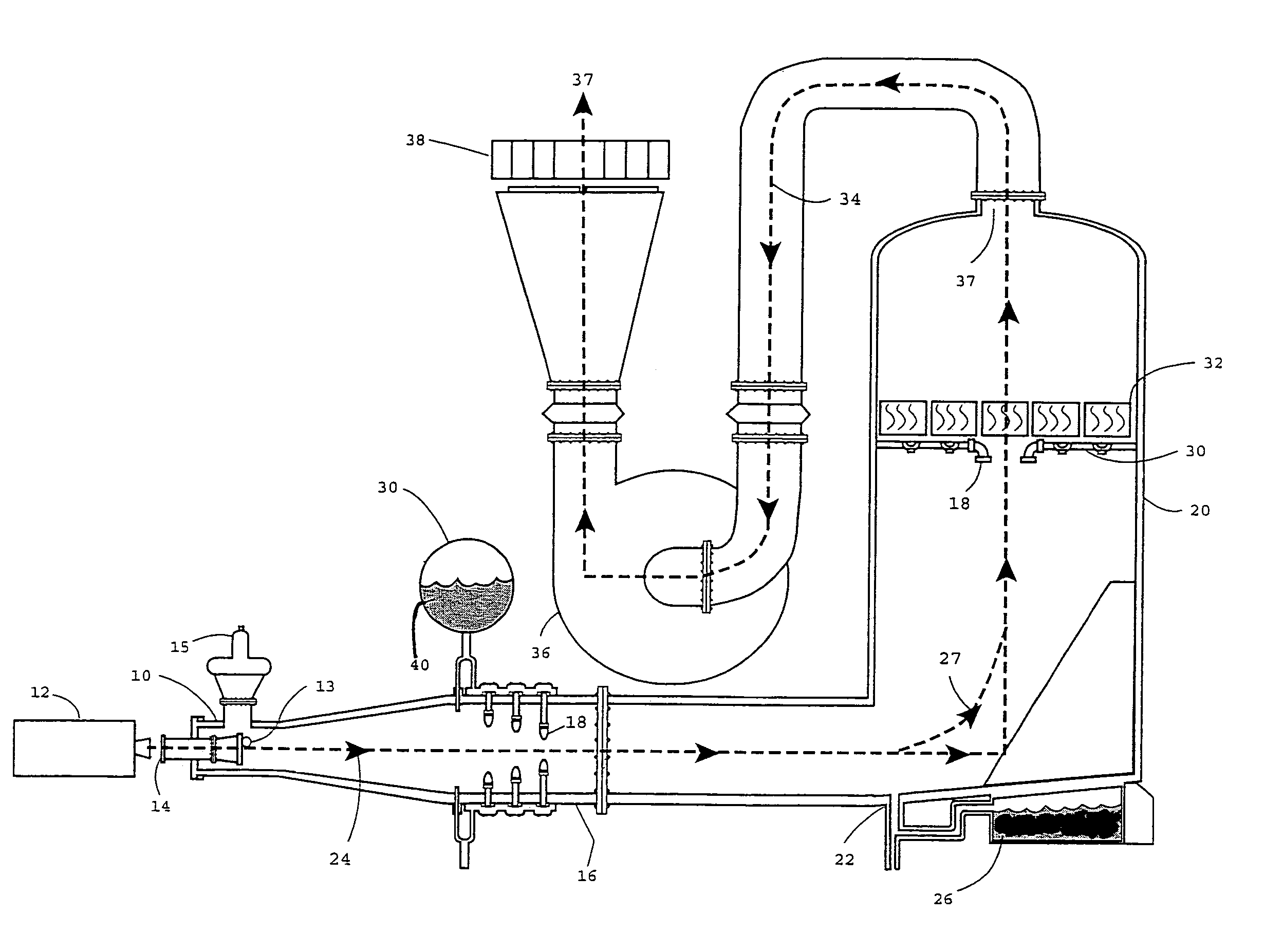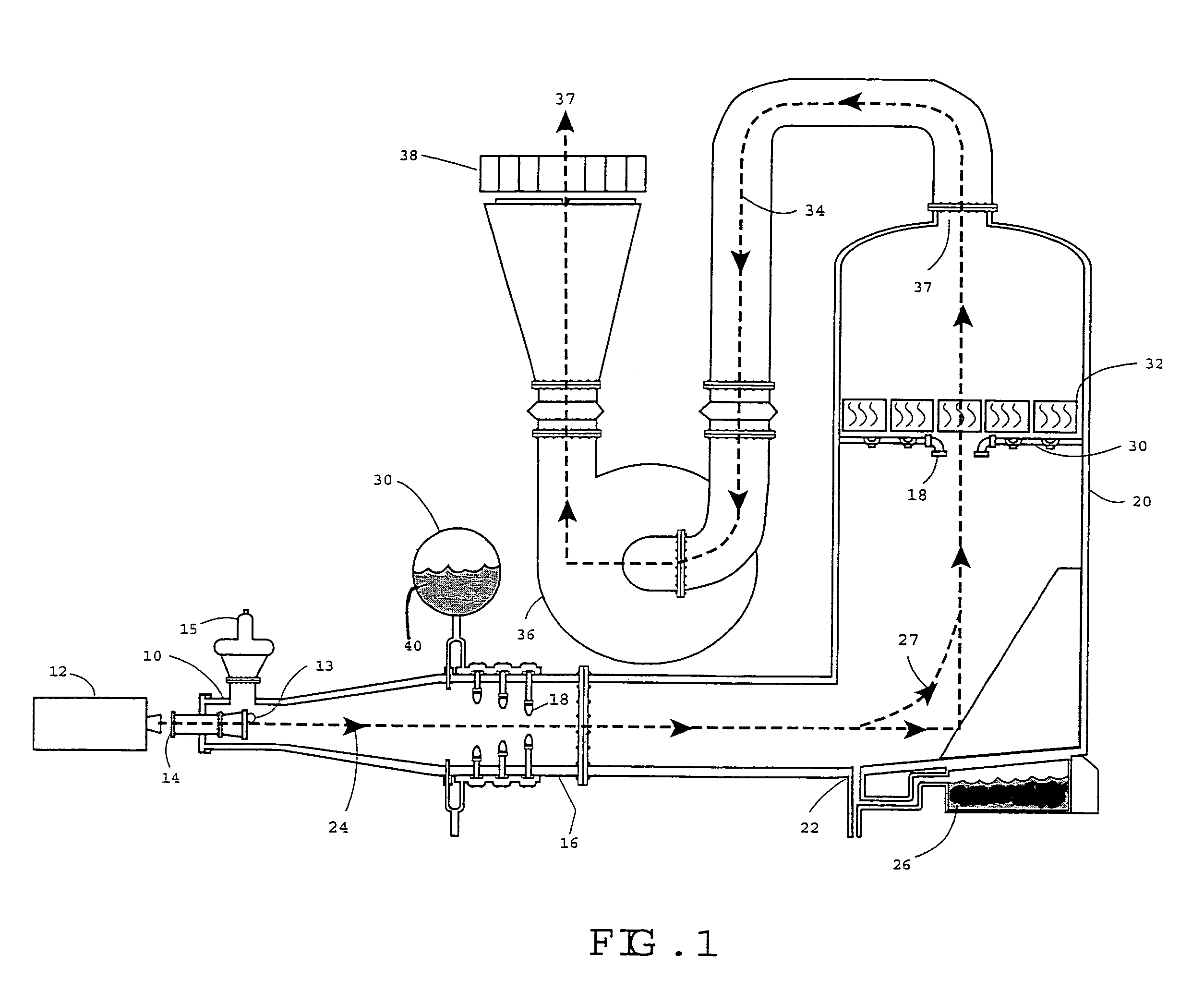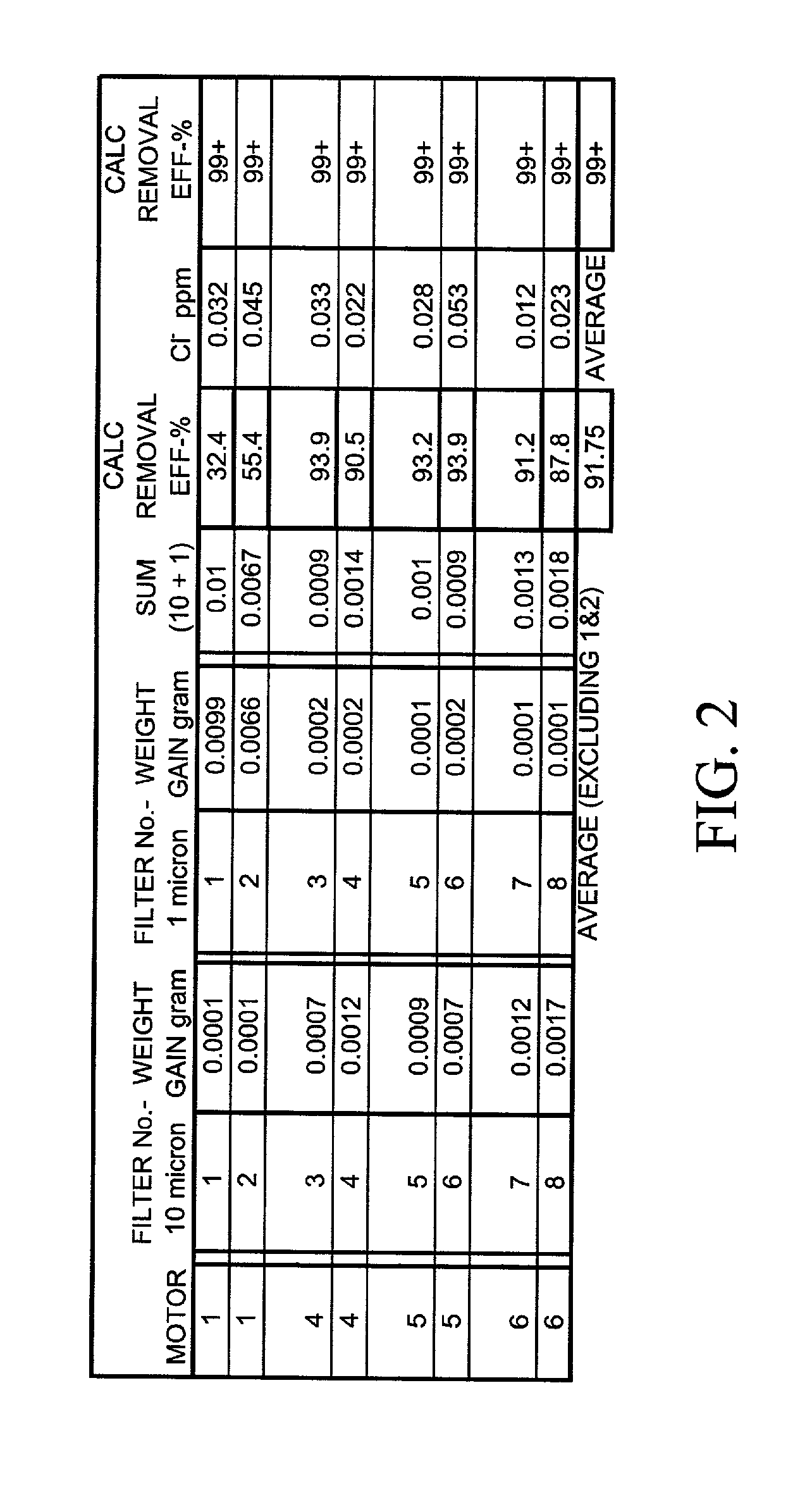Rocket motor exhaust scrubber
a scrubber and rocket motor technology, applied in the direction of machine/engine, separation process, dispersed particle separation, etc., can solve the problems of inability to capture and clean the gases emitted by the process, inconvenient use of the scrubber, and insufficient heat generation of the scrubber, so as to reduce the probability of an ignition of combustible gases, effectively capture, cool and remove pollutants, and reduce the temperature of hot exhaust gases.
- Summary
- Abstract
- Description
- Claims
- Application Information
AI Technical Summary
Benefits of technology
Problems solved by technology
Method used
Image
Examples
Embodiment Construction
[0024]FIG. 1 is a side perspective schematic view of the rocket motor exhaust scrubber 10 according to the present invention. A test rocket motor 12 is secured adjacent to an inlet 14 in scrubber 10. Inlet 14 is a hollow cylindrical chamber for transporting exhaust gases 24 from rocket motor 12 into scrubber 10. The inlet 14 is preferably a tube that is approximately 12″ long, and completely enclosed inside the scrubber 10, although one skilled in the art will understand that the exact length and diameter of inlet 14 are dependent on the nozzle and plume of the firing motor nozzle.
[0025]Motor 12 is situated such that it does not touch inlet 14, but is close enough that it captures exhaust gases 24 when the rocket motor is fired. This is accomplished by sizing the diameter of inlet 14 in accordance with the spacing between motor 12 and inlet 14 so that the motor plume will expand to the inner diameter of the inlet 14 before entering the scrubber 10 (expansion characteristics for the ...
PUM
| Property | Measurement | Unit |
|---|---|---|
| velocity | aaaaa | aaaaa |
| velocities | aaaaa | aaaaa |
| temperatures | aaaaa | aaaaa |
Abstract
Description
Claims
Application Information
 Login to View More
Login to View More - R&D
- Intellectual Property
- Life Sciences
- Materials
- Tech Scout
- Unparalleled Data Quality
- Higher Quality Content
- 60% Fewer Hallucinations
Browse by: Latest US Patents, China's latest patents, Technical Efficacy Thesaurus, Application Domain, Technology Topic, Popular Technical Reports.
© 2025 PatSnap. All rights reserved.Legal|Privacy policy|Modern Slavery Act Transparency Statement|Sitemap|About US| Contact US: help@patsnap.com



